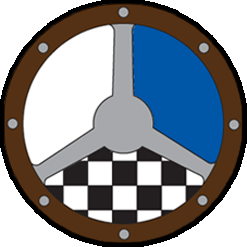Ask a pro
Receive advice directly from today’s top stars


Tiago Monteiro
Honda WTCC driver & ex-F1 star
World Touring Car Championship star and ex-F1 driver Tiago Monteiro is the latest online driving instructor for SAFEisFAST.com
The 41-year old driver races for the Castrol Honda World Touring Car Team having previously raced for Jordan, Spyker and Midland in F1. Monteiro has also competed in the Le Mans 24 Hours, TCR International and V8 Supercar series.
Despite growing up in his native Portugal, Monteiro’s car-racing career began in France, with success in the 1997 French Porsche Carrera Cup helping to kick-start a career in single-seater racing. Wins in French F3 led Monteiro to F3000 for 2002, before 10 top-ten finishes and a pole position in the 2004 Champ Car World Series were enough to convince Minardi F1 to make him an official test driver for the 2004 season, ahead two seasons as a race driver with Jordan, Midland and Spyker. the factory Seat World Touring Car team for 2007.
Monteiro joined the Seat World Touring Car team in 2007, and has remained in the series ever since, picking up 11 victories with Seat and Honda.
Tiago Monteiro answers your questions!
-
Tony Machi
What changes do you have to make to your driving technique going from rear wheel drive to front wheel drive?




Tony, you can generally brake harder and more aggressively with a front-wheel-drive car because you set the front-end up to be more responsive to that sort of thing. The key is to get the car rotated and have all four wheels pointing straight as soon as possible because if you put the power on before this critical point, you get power understeer and risk damaging the tyres. This is especially important over a race distance. With a rear-wheel-drive machine you can carry more speed into a corner and the car accepts it, and it’s also possible to put the power down before you’re fully straight and put the same stress on the tyres.
-
Tony Machi
What is the biggest change in the suspension set-up between rear and front drive?




As I mentioned previously, the front end is set-up to be more responsive. This is because the wheels and tyres need more freedom to move; you are asking them to deal with traction, braking and cornering, after all, so the loads are huge. The front end needs to be much softer to have the capacity to accept all these changes. You do virtually the opposite with rear-wheel-drive cars, but generally you just make sure which ever end drives the car has more stroke and movement from the suspension.
-
Danial Naghavi
Dear Tiago,
Firstly respect to your milestone, I am sure it must be exciting racing for Honda aswell and I wish you the very best ahead of you. It would have been awesome if I could actually chat with you in person regarding this but how did you step into motorsports? Was it harder than you expected it would be racing under pressure? What do you think the chances of someone with no track record is in being able to race professionally?




I never planned to be a racing driver Danial. I studied hotel management and was set on a career in that area, but then my father – who had raced a long time ago – decided to get back in to motor sport as a hobby. I went along a few times and was asked if I’d like to try driving his car. I thought it might be fun so I agreed, and I absolutely loved it. That day I decided I wanted to be a racing driver and so at 19 I started competing in the Porsche Cup in France. Fortunately I won the right races at the right times when the right people were watching and the opportunities opened up in front of me. Of course, the earlier you can start, the better your chances of succeeding, but I never did karting and because my results were strong from an early stage, I was able to progress.
-
Miguel Del Pilar
Hi Mr Monteiro, I’m a 15 year old karting driver. Coming from someone with so much experience in the racing community, how do I go about partnerships, and what do people look for in drivers? Thank you for your time.




Miguel, everybody looks for speed and results above all else. If you’re not winning, people simply won’t look at you. Results alone won’t do the job though. You need to be a businessman out of the car. You’re selling yourself as a product, remember? If you present yourself as an easy-going person who has interests outside motorsport then this will appeal to people who could be future sponsors or employers. Language skills help too. Don’t force it if it isn’t true to you though; people will see through that.
-
Matt Ef
Hi Tiago,
Keep up the excellent racing this season!! I hope you win the championship this year. Go Honda!
My questions are more about your WTCC car. So, what kind of variable valve timing is on your Civic HR-412E engine or are both intake valves always open throughout the rpms? Also, why is the exhaust manifold 4-1 instead of 4-2-1? And lastly, why is its intake manifold like a big box instead of runners? Thank you!




I’m sorry Matt. I don’t know the answers to those questions. I leave that to the engineers.
-
Jang Han Choi
I am a 991GT3CUP Racing driver who wants to change the foot of my braking in VLN. Can you give me some advice of left foot braking?




Hi Jang. Left-foot braking is definitely the more efficient style for any kind of racing and I’d recommend you change as soon as possible. I was forced to learn it when I raced in Champ Car in 2003. Max Papis and Christian Fittipaldi both gave me the same piece of advice; do it in your road car every single day. It feels alien at first, and a road car is actually more sensitive to the change because you can’t stomp on the brake pedal in the same way. What it will do is give your left foot that level of sensitivity it needs. You should force yourself to do it and it will feel natural before you know it. For some drivers, there is a downside in endurance races because you can spend slightly longer on the pedal every time you brake, and this can wear the pads more than a traditional right-foot-braking technique would. But I’ve done six 24-hour races and the difference in wear has always been minimal between me and my right-foot-braking co-drivers.
-
Massimo Trapanese
Your fans are important for you. You are always very kind with them. It’s not easy to find drivers like you, do you agree with fan engagement in motor sport?




Nowadays it’s mandatory, Massimo. Fans feel need to be able to reach the people they support and it’s important for us drivers to show that we appreciate that support, be it by communicating on social media, talking to fans in the paddock or signing autographs. I’m very active on several social media platforms because I like the interaction and it’s good to see Formula 1, for example, increasing its openness with fans. I think something like FanBoost in Formula E is a step too far because I don’t think it’s right for someone to be given an on-track advantage just because they have more fans than someone else, but I think there’s a happy medium to be reached.
-
Jourdan Johnson
Hello,
Ever since I was 16 I have wanted to be a racing driver. However, financially this was not possible for me for many years. Now at age 26, I have jumped head first into motor sport by doing karting and regional car racing. Likely, open-seaters are out of the picture because of my age. However, I would love to race Touring or GT cars in the future. What advice can you give me about how to make this into a reality?




I started at 19, having never done karting, so I’m living proof you don’t have to be a baby in a cadet kart to have a professional career. It’s great that you’re now competing, but if you’re ever going to make it as a professional, you have to start showing you can win consistently at your level and then move up the ladder quickly, learning and winning every step of the way. If you can do this, people will start to talk about you. If you add to this a strong ethic to work hard physically, mentally and on your driving, and take any opportunity to race or improve yourself, you never know… To become a pro driver starting at age 26 is not impossible, but it’s very, very tough and you have no time to lose.
-
James McIntosh
What’s been your toughest racing season of your career and why?




Easy answer James; International F3000 with Super Nova in 2002. I came into F3000 from a very successful F3 career, having been runner-up in the French Championship the previous year. Renault invited me to join their Driver Development scheme and I was offered an F1 test, which I as over the moon with. Then they decided to place me in an F3000 programme alongside Sebastien Bourdais and I found this very difficult. With no testing, minimal track time during race weekends, and against third or fourth-year drivers like Sebastien, Tomas Enge and Justin Wilson, a rookie simply can’t compete. I spent that entire season just trying to learn the tracks, the tyres and the cars. I didn’t enjoy it.
-
Louis Pawlinksi
Hi Tiago! You’ve raced in lots of different series now, but are there any that you still want to race in before you retire? Thanks!




Hi Louis. I’m delighted to have been a works driver in a World Championship for a long time, and I wouldn’t say there are any series or types of car I’m desperate to race. I would like to try a couple of one-off events though; the Bathurst 1000, Suzuka 1000 and Daytona 24 Hours would be three on my list. It’s more about the event, not the series.
-
Jake Doherty
Was racing in F1 all that you expected it to be? Do you have any regrets from racing there?




I never really had any expectations Jake, because I never planned to race in F1. The way I got into grand prix racing was all so fast that I never had a chance to think about what I should or could expect or achieve. I wasn’t prepared for quite how tough the schedule of constant media commitments, sponsor functions and team meetings would be and if I could go back in time, armed with the knowledge I now have, I’d have been much better-prepared. I don’t know if you’d call it a regret, but I’d like to have had the chance to race a front-running car and show people exactly what I could do. I guess most people who haven’t driven for a top team would say the same though.
-
Callum Johnson
Can you give me some advice on how to set up an overtaking move? I’m currently racing go karts and have good pace, but my racecraft is letting me down 🙁




The element of surprise is everything Callum. If the driver ahead of you his half-decent, he or she will sense they’re under pressure and will be analysing where you’re faster than them on each lap, so they’ll be ready for the move when it comes. If you can work out for yourself where you’re faster without showing your cards, you’ll be much better-prepared to make the move when the time’s right, and they won’t have time to defend.
-
Tonino Guglielmi
Ciao Tiago – What’s been your best race win in your big career? Hope to see you at Monza one day my friend.




I had a good win in F3 at Spa against Takuma Sato and Jenson Button, but that day gets better with time because of what they’ve gone on to achieve. For pure emotion on the day – and even a year later – the WTCC victory on the streets of Vila Real was the best and I’m not sure anything will top that. I grew up not too far from the town so the people there are my people. To win and celebrate with them on the podium was a magical moment.
-
Jake Marvin
What are the best and worst things about being a racing driver?




Jake, the best thing is having the opportunity to live out my passion and do what I love most; drive amazing, powerful racing cars at high speeds on some incredible circuits. The worst thing is the amount of time I have to spend away from my wife and children, but it’s just a sacrifice that has to be made. It’s the one negative among thousands of positives.
-
Joe
Hi Tiago! How did last year’s aerodynamic rule change in the WTCC change how you have to drive the car? Good luck this season!




Hi Joe. The change from S2000 to TC1 cars in 2014 was great for me because the increase in aero suited my driving style much better and turned the Honda from a touring car into more of a prototype. Previously you had to drive to the limit of the tyre grip in the corners, but now you can use the aero to corner faster without killing the tyres. It’s much better.
 Road Racing Drivers Club
Road Racing Drivers Club
 Share
Share







